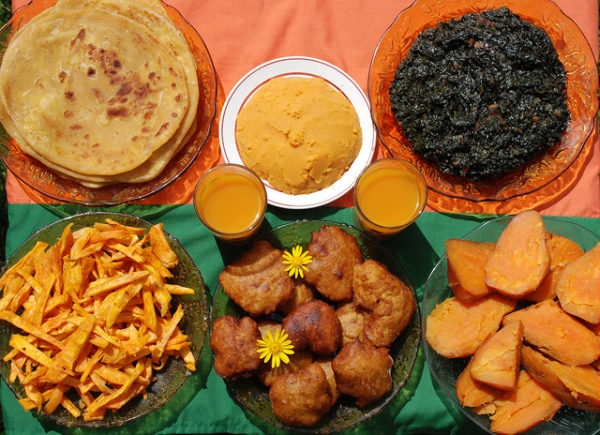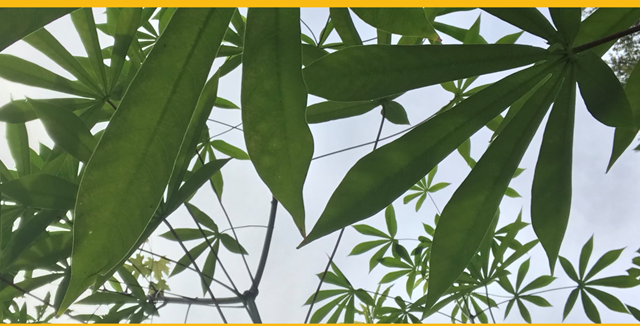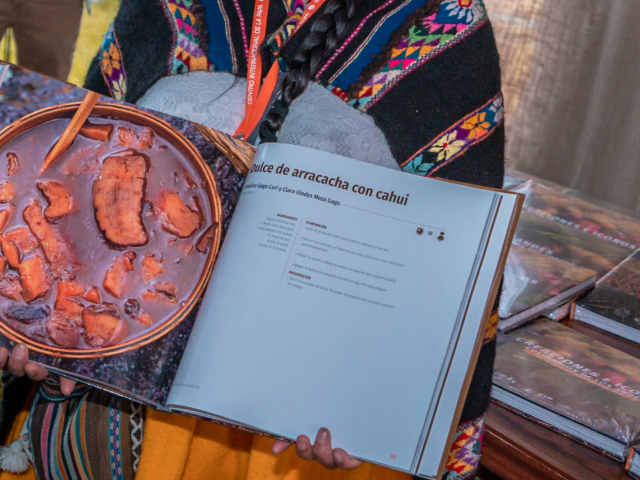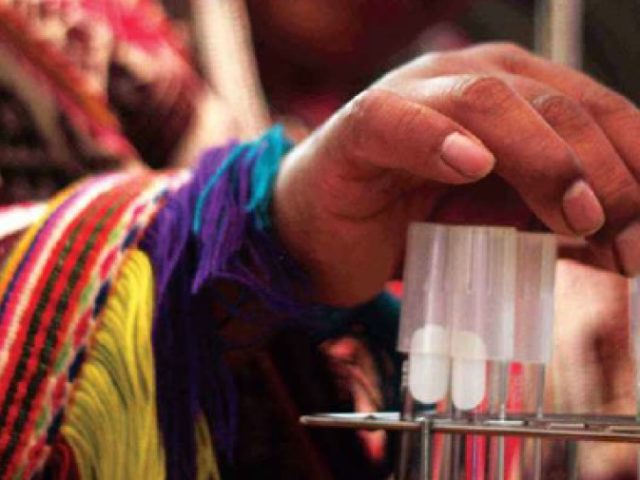The objective of Flagship project 4 (FP4) is to support the fuller, equitable, and sustainable utilization of RTB crops for healthier diets and improved income opportunities. The flagship harnesses the changing demand of consumers and other users of RTB crops as drivers of change that can positively transform production and utilization of RTB crops and increase their contributions to nutritious, profitable, and environmentally sustainable food systems. There is great scope in diversifying and improving the utilization of RTB crops for nutrition and economic goals, resulting in healthier diets and increased economic opportunities for women, men, and youth. FP4 works to overcome constraints that have hindered RTB crops from entering urban markets, such as their perishability, bulkiness, perception as of low social status, and limited post-harvest investment.
Hence, FP4 will addresses the following grand challenges as identified in the CGIAR Strategy and Results Framework:
Persistent rural malnutrition, especially undernutrition
The number of undernourished people in Africa is increasing, and the world is not on course to meet global nutrition targets. Women of reproductive age and young children are most vulnerable to undernutrition because of their greater nutritional needs and social marginalization. Micronutrient deficiencies can have fundamental and irreversible impacts on physical and mental development of children. Through research and development, along with processing and post-harvest management to extend availability, RTB crops and nutrition-oriented research can reduce undernutrition amongst millions of vulnerable consumers.
Feeding rapidly growing urban populations
As of 2014, 54% of the global population lived in cities, and 66% is projected by 2050. Supplying nutritious and affordable staple foods for these populations will require a reorientation of agri-food systems in many low-income countries. RTB crops can be grown comparatively easily in large quantities in many countries that are overly dependent on imported grains. FP4 harnesses the relatively untapped potential for improving processing and reducing post-harvest losses of RTB crops. Such gains help to reverse the trend of declining RTB food consumption among urban populations due to the crops’ perishability and bulkiness.
Climate change
FP4 assesses implications from climate change and increased extreme climate events on post-harvest management, including harvesting, storage, fresh markets, and processing options. These assessments allow the flagship to develop and validate improved handling, processing, and storage technologies and supply chain management guidelines, among other activities.
Diets are becoming less diverse, healthy, and nutritious.
The number of people overweight or obese is growing fast globally and leading to an estimated loss of 35.8 million disability-adjusted life years and rising diabetes rates. By 2035, diabetes is projected to affect more than 500 million people, the vast majority in low- and middle-income countries. RTB crops are mainly recognized as a source of calories stored as starch, but they are also functional foods that provide fiber and other key elements in more diversified diets. In developed countries sweetpotato has already attracted attention and seen increased consumption because of its relatively low glycemic index. Recent research in cassava suggests that RTB varieties with resistant (high-amylose, low-glycemic) starches can be developed as healthier and economically valuable alternatives. Linking this research with nutrition education and behavior change interventions, FP4 can make new and significant contributions to managing the public health risks of obesity and diabetes.
Post-harvest losses are often high for RTB crops and food safety is a growing concern. Managing the perishability of RTB crops and meeting increasingly differentiated market and policy demands are major challenges. FP4 strives to enable producers and processors to take advantage of processing opportunities and meet food safety and quality standards, through research on nutrition qualities, sensory attributes, contamination, storage and handling, and convenience and packaging of fresh produce and processed products.
New entrepreneurial and job opportunities are emerging from changing patterns of agri-food demand.
These can provide spectacular growth opportunities for RTB crops. Although local agri-processing can generate significant employment for rural youth and women, improved technology and research on value chains is needed to improve efficiency, safety, and sustained economic benefits. This includes strengthening smallholder business organization and entrepreneurial and business management competencies among women, men, and the youth.
Environmental pollution and energy losses
Inefficient use of energy, water, and other inputs; process wastes; and sub‐optimal use of by-products of RTB crops lead to environmental impacts and reduce competitiveness of the processing industry. This issue has important gender ramifications, too, as “women and girls often carry a disproportionate burden from environmental degradation compared to men” (UNEP 2007). Improving efficiency and utilizing by-products is an expanding area of RTB research.
Clusters
FP4 is made up of four clusters:
| Cluster | Aim |
| CC4.1: Post-harvest innovation | Facilitate exchange of research methodologies and emerging evidence, and provide learning and networking support for research teams and partners across FP4 |
| CA4.2: Cassava processing | Contribute to increased incomes and food security in target countries in Africa, Asia and Latin America, by improving productivity, efficiency, product quality, health and safety at small and medium scale cassava processing centers |
| CA4.3: Biofortified cassava | Provide rural households with nutritious biofortified cassava that will help reduce VAD, particularly among pregnant and lactating women and children under 5 years of age |
| SW4.4: Nutritious sweetpotato | Improve nutrition and diets and provide income opportunities in Africa, Asia, and the Caribbean through more diversified and intensified utilization of nutritious sweetpotato |




